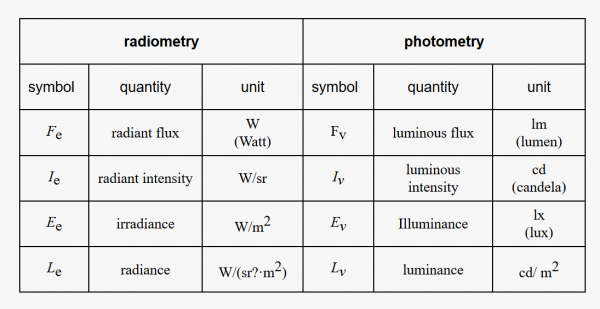Fundamentals
Instruments used in photometry have a spectral responsivity which corresponds to the spectral responsivity of the human eye. The spectral responsivity of the day-light vision is defined and put into tables by the Commission Internationale de l’Eclairage. This covers the range of wavelengths from 380 nm to 780 nm and has its maximum at 555 nm. This wavelength corresponds to a frequency of 540 THz in standard air according to the definition of the unit for luminous intensity candela in the International System of Units SI. Instruments with that spectral sensitivity are called photometers, otherwise they are radiometers. Electromagnetic radiation of this range ofwavelengths is called light, everything else is called electromagnetic radiation (i.e. terms like “infrared light” or “ultraviolet light” are actually wrong, but are commonly used).
There is a spectral responsivity of the human eye adapted to darkness (scotopic vision) in addition to the relative spectral responsivity of the vision of day light (photopic vision). These are pure physiological quantities. The human eye is accordingly more sensitive for green light than for red or blue light. The maximum value of the spectral responsivity at 555 nm is laid down in the definition of the candela at 683 lm / W, so that the order of magnitude of the modern candela equals the order of magnitude of the older definitions of the unit of luminous intensity. By this modern definition of the candela the photometric units are in addition traceable to the relevant radiometric units.

Thus the photometric unit of the luminous flux lumen equals the radiometric unit of the radiant flux Watt, e.g.